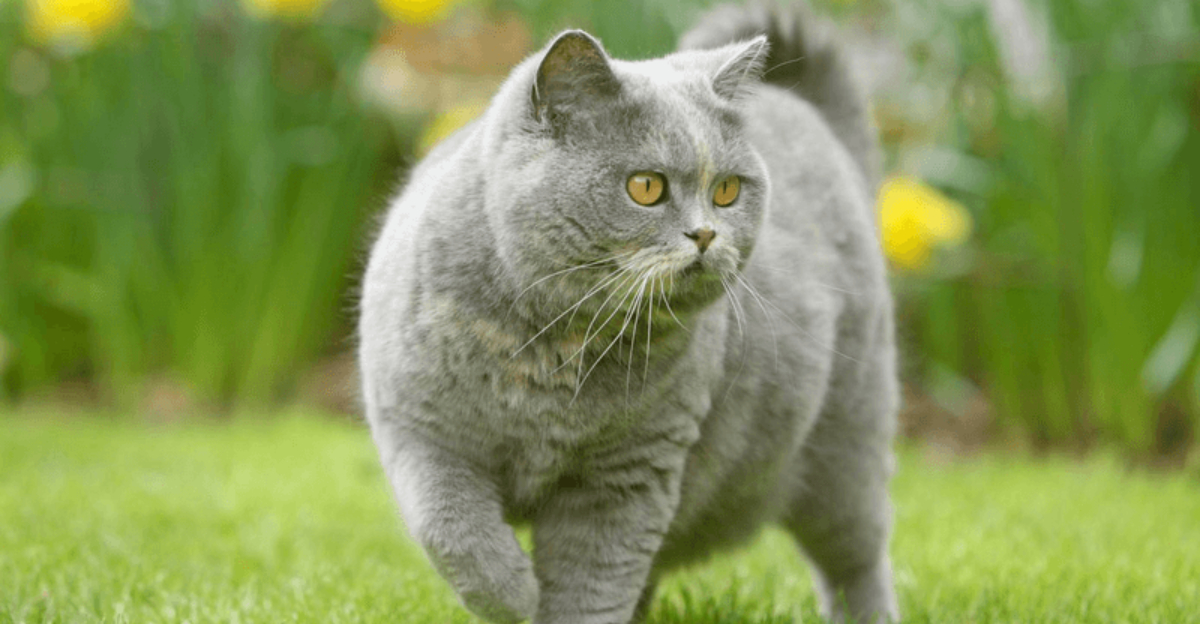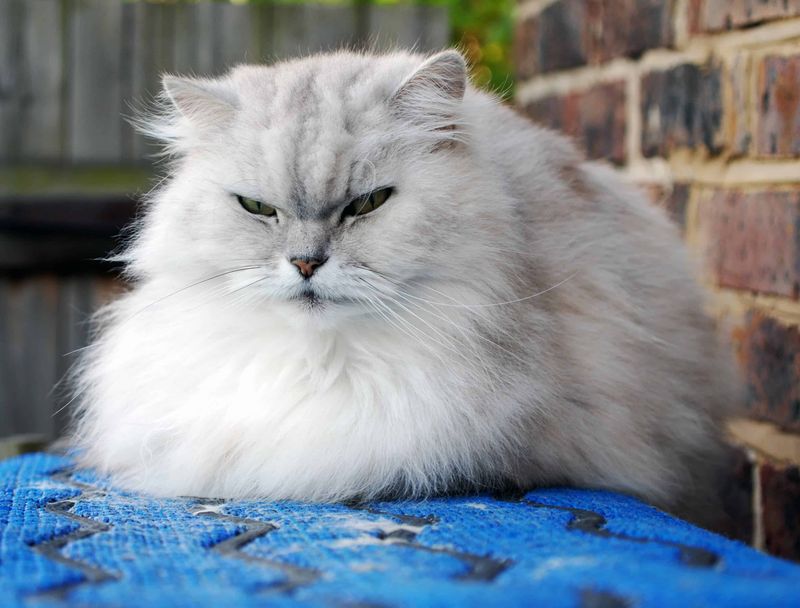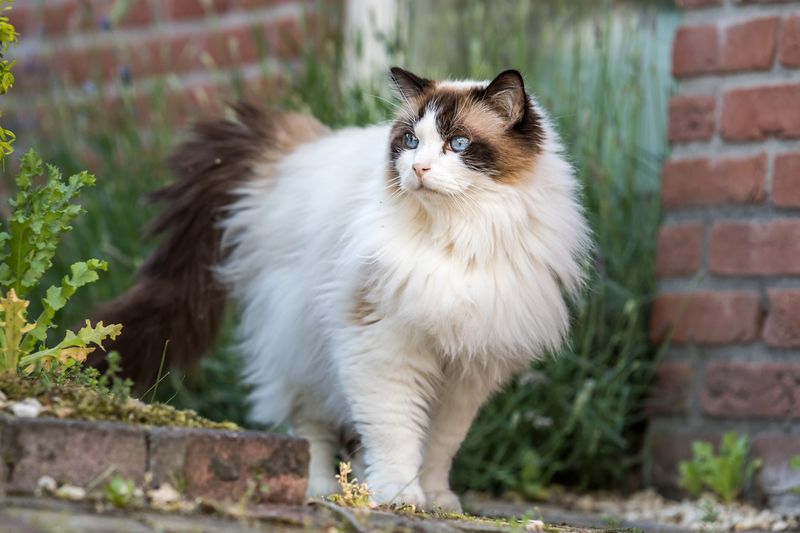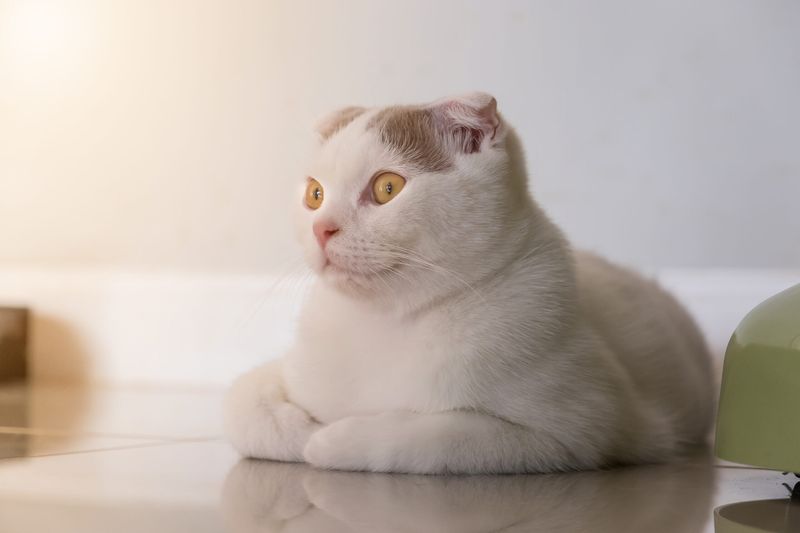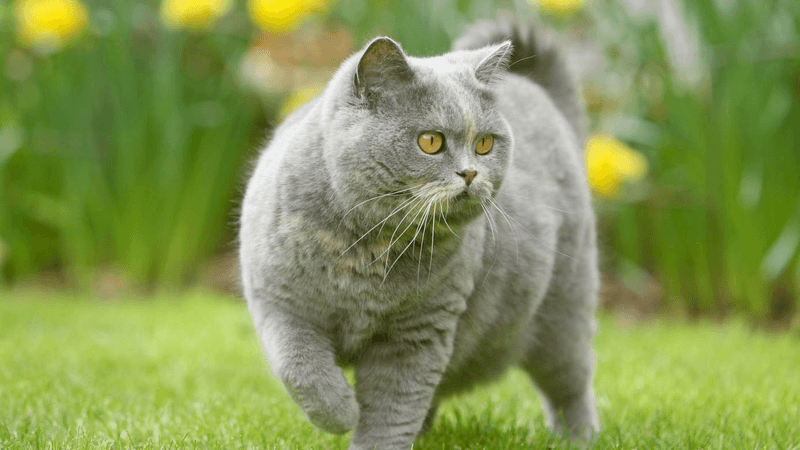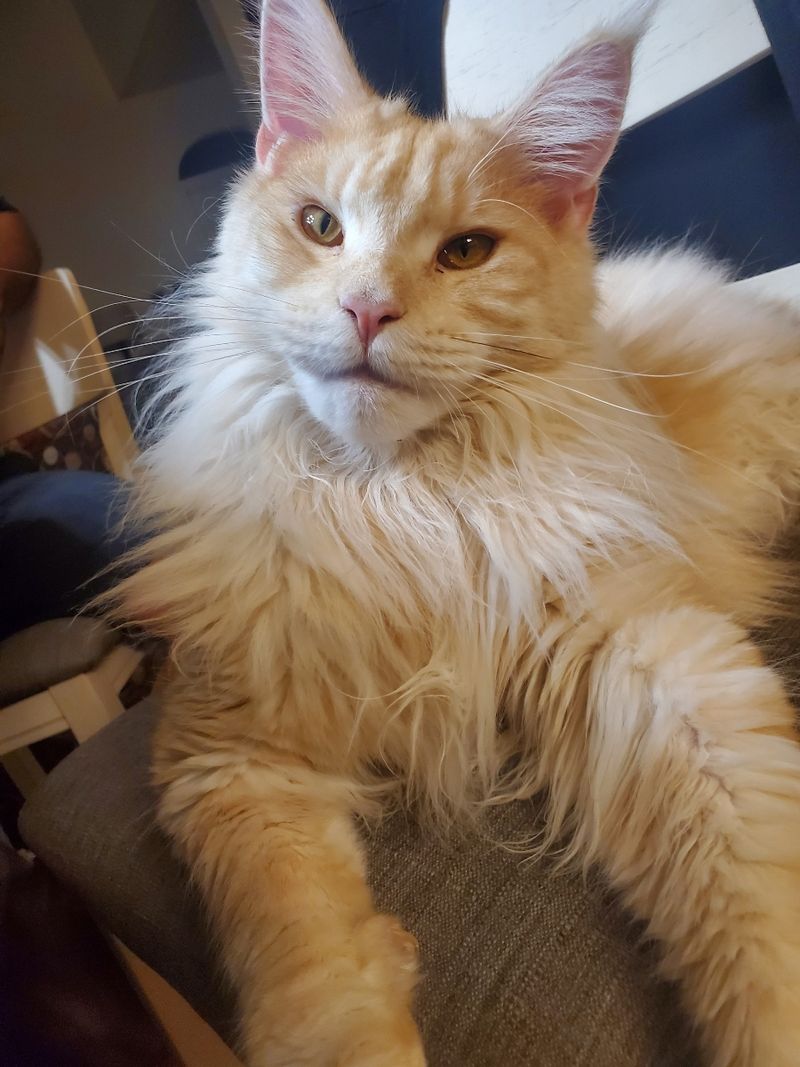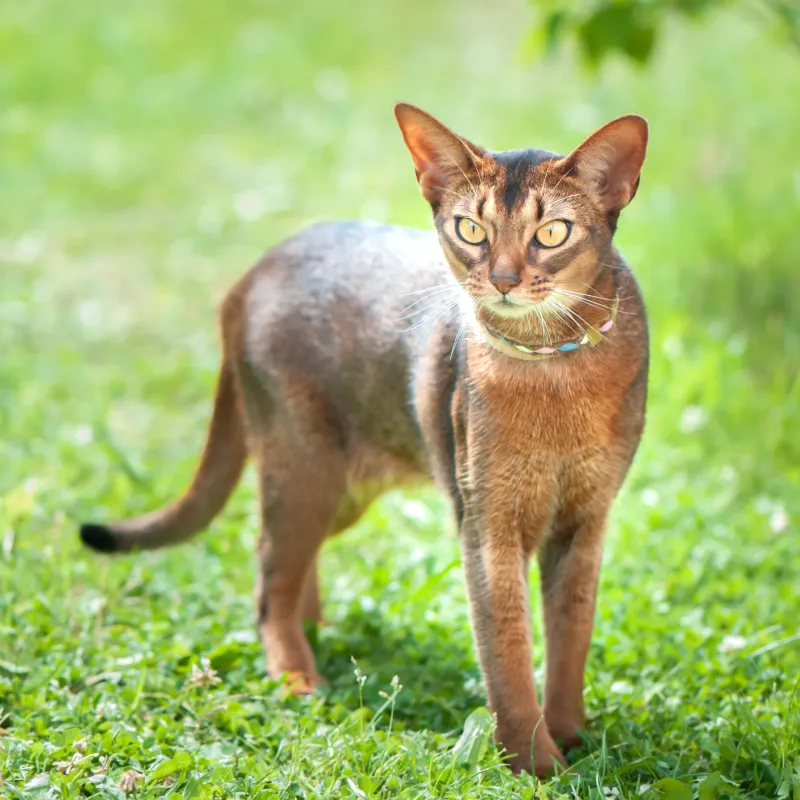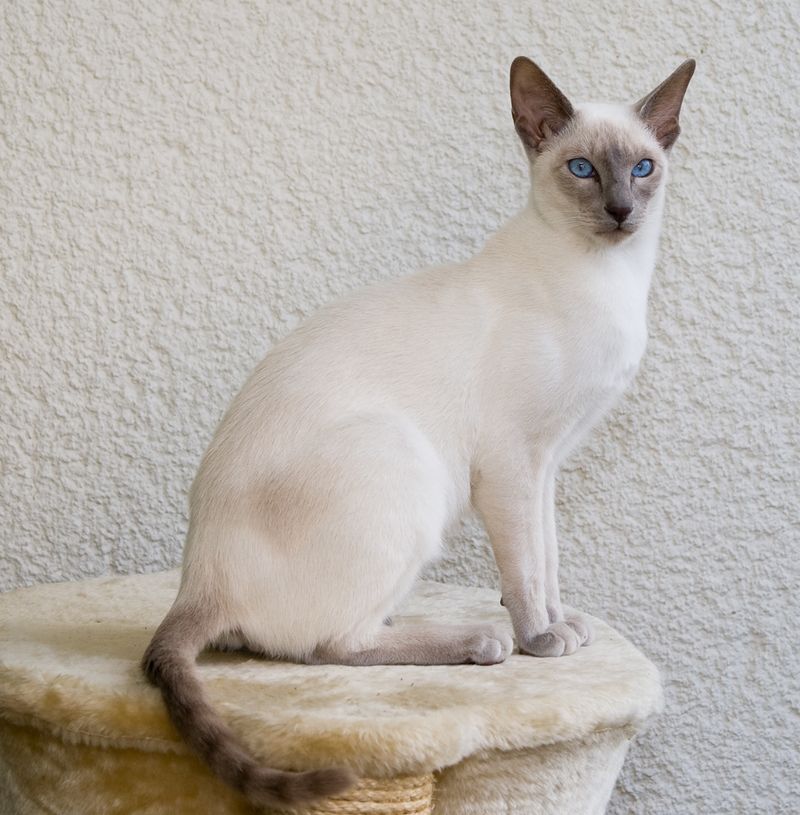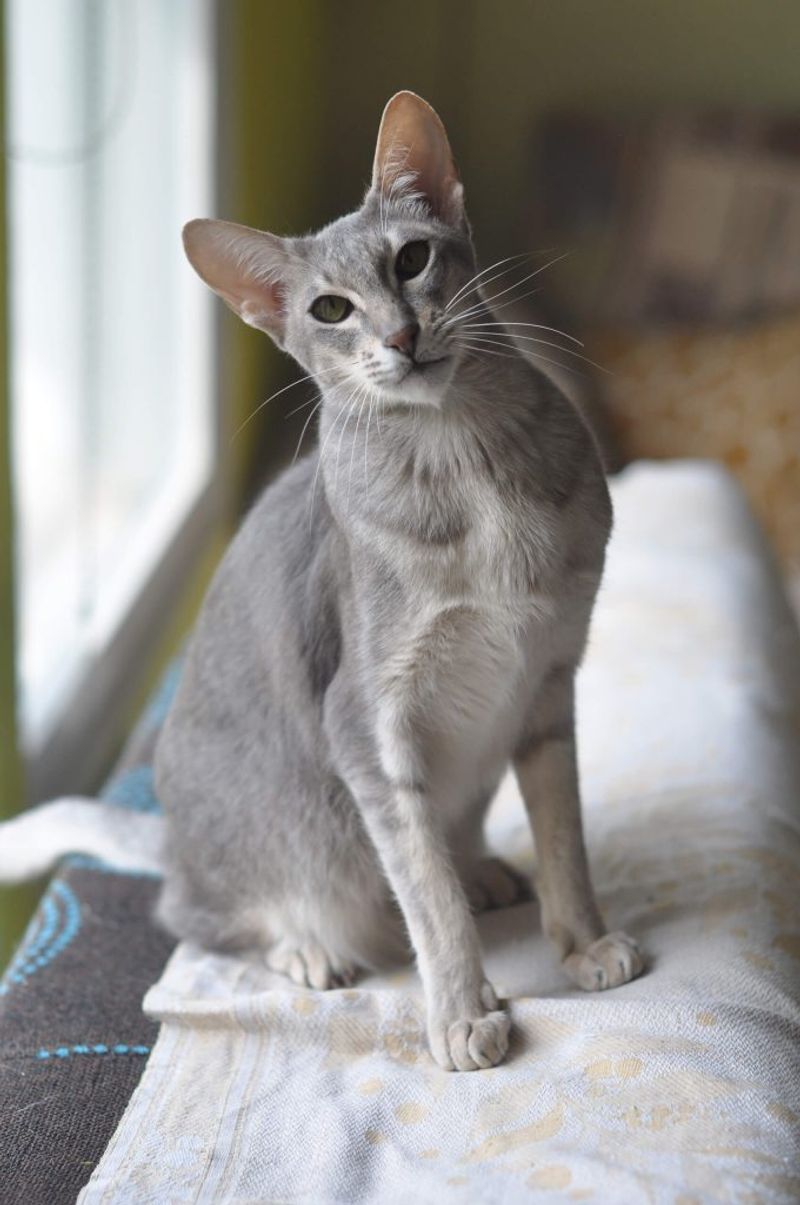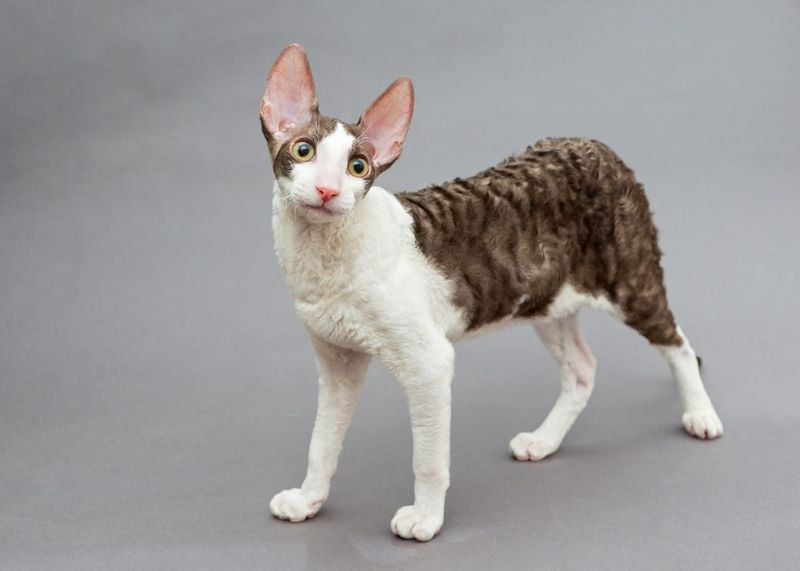📖 Table of Content:
Feline body types vary widely across breeds, with some naturally inclined to gain weight while others remain lean with minimal effort. These differences aren’t just cosmetic—they’re rooted in genetics, metabolism, and activity levels. Recognizing these tendencies can make a big difference in how a cat’s health is managed.
Certain breeds require closer attention when it comes to diet and physical activity. What might be a healthy weight for one cat could signal a problem in another. Tailoring nutrition and exercise to match a cat’s breed helps prevent health issues down the line.
A well-informed approach starts with understanding a cat’s natural build and energy needs. Whether the cat is stocky and food-driven or sleek and constantly in motion, breed-specific knowledge provides valuable guidance. It’s one of the most effective ways to support long-term well-being and vitality.
1. Persian
Behind all that gorgeous fur, Persians often carry extra weight that goes unnoticed until veterinary visits. Their sedentary lifestyle and love of indoor comforts make them prime candidates for obesity.
Long hair masks weight gain, creating a dangerous situation where owners might miss the early signs of unhealthy weight. Persians naturally move at a leisurely pace and rarely engage in high-energy play.
Their flat faces can also contribute to reduced activity levels since they sometimes struggle with breathing during exertion. Regular grooming sessions provide good opportunities to check for appropriate body condition by feeling for ribs and spine beneath that luxurious coat.
2. Ragdoll
Ragdolls earn their name from their tendency to go limp when held – a charming trait that also hints at their relaxed approach to exercise. These large-framed felines can weigh up to 20 pounds naturally, but obesity pushes them well beyond healthy limits.
Their easygoing temperament means they’re less likely to burn calories through play or exploration. Many Ragdolls prefer cuddling to chasing toys, creating a calorie imbalance when fed the same as more active breeds.
Owners often mistake their large size as normal when they’re actually carrying too much fat. Regular weight checks are crucial since their thick fur and naturally big build can disguise unhealthy weight gain.
3. Scottish Fold
Famous for their folded ears and sweet expressions, Scottish Folds have another less-discussed trait: a tendency toward weight gain. Their moderately active nature combined with a hearty appetite can lead to expanding waistlines if diet isn’t carefully monitored.
Many Scottish Folds develop joint issues as they age, making exercise increasingly uncomfortable. This creates a cycle where reduced movement leads to weight gain, which further stresses joints.
Food-motivated and clever, these cats often convince their humans to provide extra treats through adorable begging behaviors. Owners must resist those pleading eyes and maintain strict portion control to prevent obesity-related health problems in this beloved breed.
4. British Shorthair
Round-faced and stocky British Shorthairs love their food almost as much as they love lounging around. Their naturally muscular build, combined with a laid-back personality, creates the perfect recipe for weight gain as they age.
These blue-gray beauties have slower metabolisms than many other breeds. They’re not particularly energetic by nature, preferring to observe household activities from a comfortable perch rather than participating.
Without regular play sessions and portion control, British Shorthairs can quickly develop a rotund silhouette. Their tendency to gain weight gradually means owners might not notice until the cat has become significantly overweight.
5. Maine Coon
Maine Coons are naturally large cats, but their size should come from frame and muscle, not fat. Despite their impressive dimensions, these gentle giants are prone to obesity when their caloric intake exceeds their activity level.
Their thick fur can hide weight gain until it becomes severe. Regular weight checks are essential since what looks like a healthy Maine Coon might actually be carrying dangerous excess fat.
Indoor living particularly challenges these cats who evolved as working mousers on farms and ships. Their bodies expect more activity than the average apartment provides. Interactive toys and climbing structures help maintain healthy weight in this breed that can tip the scales at 25 pounds even when fit.
6. Abyssinian
Abyssinians rarely struggle with weight issues thanks to their natural athleticism and high energy levels. These tawny felines seem perpetually in motion, burning calories through play, exploration, and athletic feats that would make Olympic gymnasts jealous.
Their slender, muscular builds reflect their ancient ancestry as active hunters. Abyssinians maintain lean physiques well into their senior years, provided they have adequate space for exercise.
Mental stimulation proves as important as physical activity for these intelligent cats. Puzzle feeders work wonderfully for Abyssinians, making them work for their food while engaging their sharp minds. Their naturally fast metabolism means they often eat more than other cats of similar size while maintaining healthy weights.
7. Siamese
Sleek and vocal, Siamese cats seem to approach life with boundless energy and opinions about everything. Their slender frames reflect their active lifestyle and naturally high metabolism that efficiently burns calories.
Rarely found lounging for long periods, these chatty companions prefer interactive play and will demand attention when bored. Their lean muscle tone comes from constant movement rather than restrictive dieting.
Siamese cats often maintain healthy weights throughout their lives with minimal intervention. Their natural curiosity drives them to explore every corner of their environment, providing consistent exercise. When Siamese cats do gain weight, it’s usually a sign of health issues or age-related mobility problems rather than simple overfeeding.
8. Bengal
Bengals carry the athletic legacy of their Asian leopard cat ancestors in every spotted inch of their muscular bodies. These energetic felines maintain lean physiques through constant activity, climbing, jumping, and playing with an intensity few domestic breeds match.
Their high energy requirements mean obesity rarely affects Bengals unless they’re confined to very small spaces. Owners typically struggle more with providing enough stimulation than limiting calories.
Bengals retain their wild ancestors’ efficient metabolism, converting food into energy rather than storing it as fat. Their muscular builds feature prominent shoulder blades and defined waistlines even without dietary restrictions. Regular play sessions with interactive toys help satisfy their need for both physical and mental exercise.
9. Oriental Shorthair
Resembling living sculptures, Oriental Shorthairs maintain their sleek, angular silhouettes with seemingly little effort. Their elongated bodies and naturally slim build make obesity extremely rare among these elegant felines.
Genetic factors give these cats a metabolism that burns calories efficiently. Even slightly older or less active Orientals typically maintain healthy weights without strict dietary management.
Their boundless curiosity and playful nature contribute significantly to their lean physiques. Oriental Shorthairs engage enthusiastically with interactive toys and puzzle feeders, burning calories while satisfying their intelligent minds. Their vocal nature ensures they’ll let you know when they’re ready for playtime, making it easier for owners to keep them active.
10. Cornish Rex
Beneath their distinctive curly coats, Cornish Rex cats hide surprisingly warm bodies – evidence of their racing metabolism that burns calories at remarkable rates. These playful cats maintain kitten-like energy well into adulthood, naturally keeping weight off through constant movement.
Their slim, arched bodies reflect an athletic build designed for speed and agility. Cornish Rex cats often eat more than other breeds while staying slim, thanks to their efficient energy use.
Temperature regulation plays a role in their calorie burn – with less insulating fur, these cats use more energy to maintain body heat. This unique breed combines the appetite of a much larger cat with the slim build of a perpetual athlete, making obesity extremely uncommon among Cornish Rex cats regardless of age.
